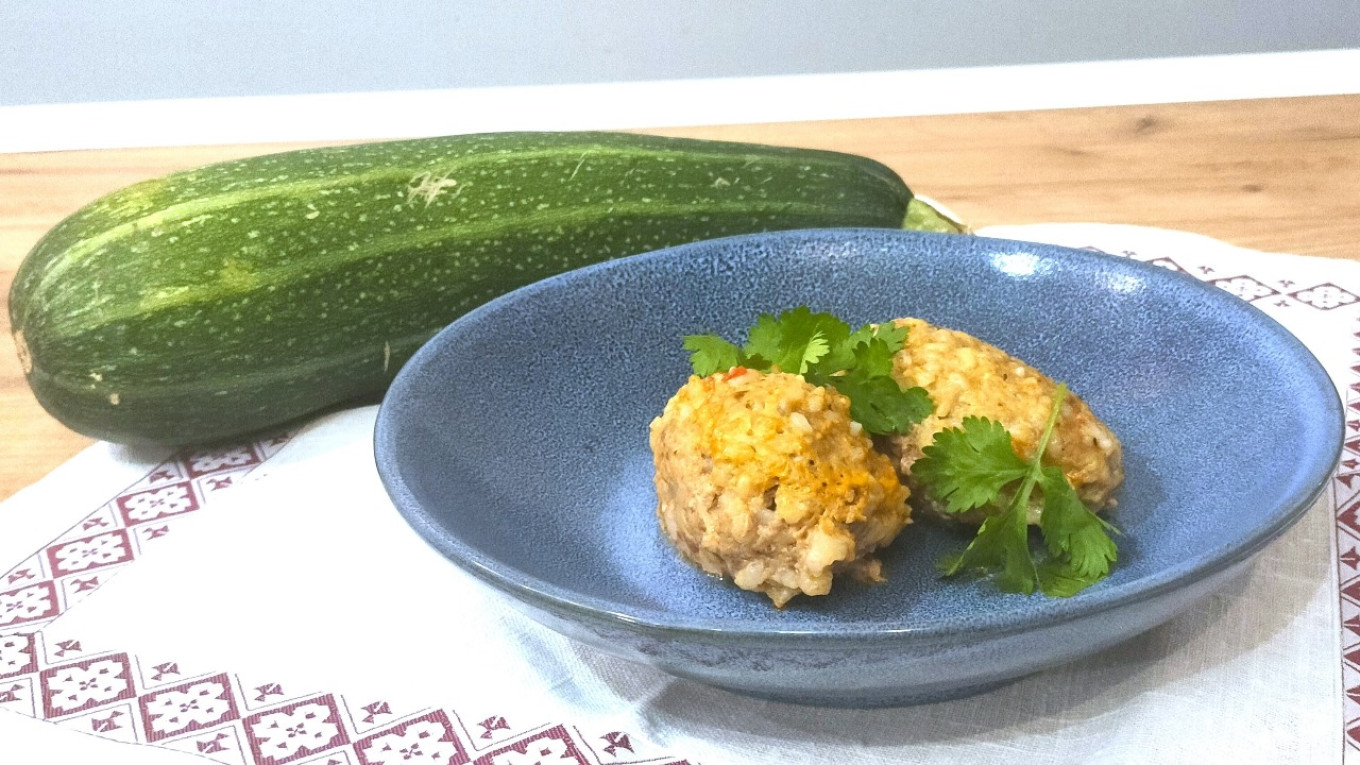Until the middle of the 19th century, some foreigners might have had a hard time doing their food shopping in Moscow. Imagine a Frenchman walking into a grocery shop to buy buckwheat groats. He asks for “sarasin.” But to his dismay, the grocer puts a bag of rice on the scale.
The Frenchman wanted to make buckwheat porridge, but he got a semantic puzzle instead.
Long ago in Russia white rice was called “Sarasin millet,” while in French sarasin is buckwheat. No wonder there was confusion! The words clearly have the same root and apparently the same origin. What do these two products have in common? What they have in common, to be honest, is how far Russia and France were from the country where these products got their names.
Since ancient times rice was imported to the Russian lands from far away: from Central Asia, Eastern Turkestan (Xinjiang), partly from Iran and Turkey. In general, it came from the Muslim peoples, or Saracens (sometimes spelled Sarasins). Russian merchants naturally learned about rice from their contacts among Asian and Volga River traders. And when Russian merchants and soldiers traveled to Byzantium, of course they tasted rice there, too.
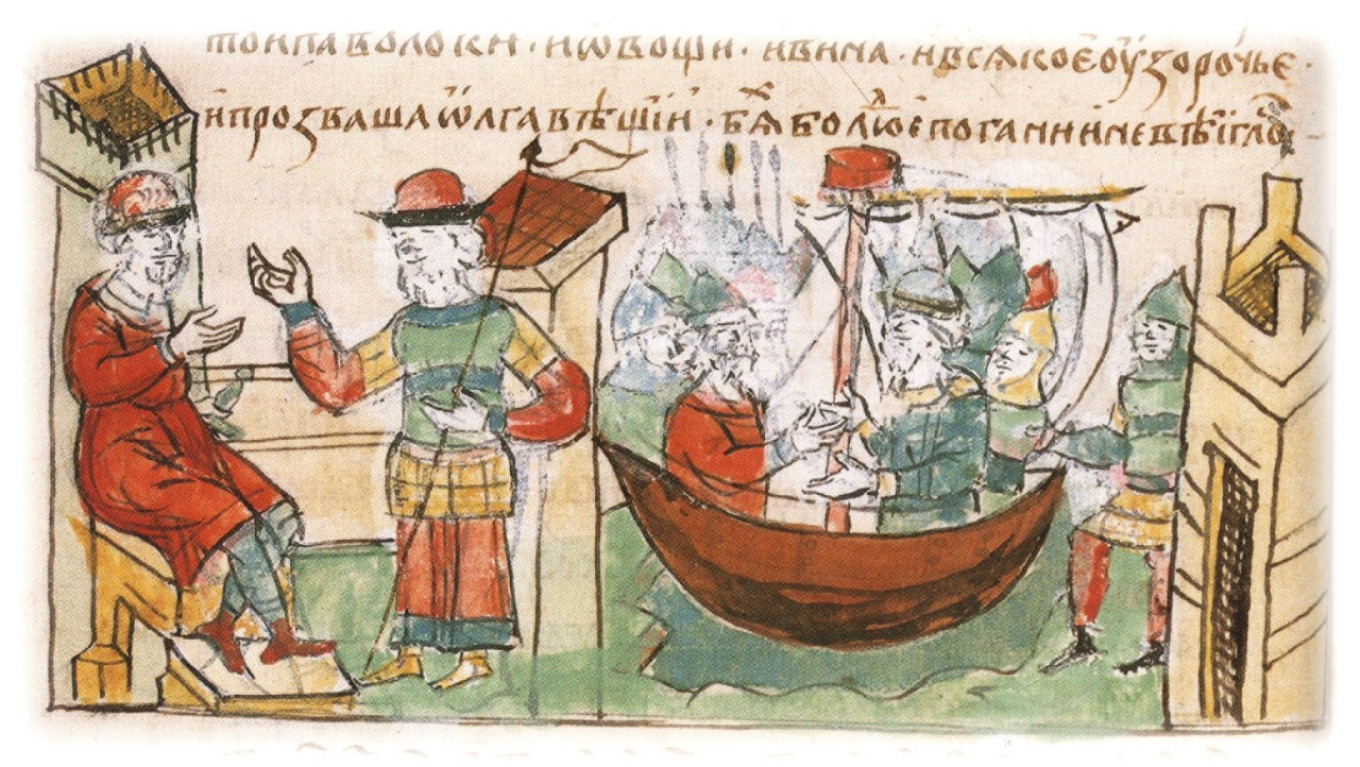
Caravans traveled along the southern border of Russia bringing goods from Asia to Europe and North Africa. Warriors from Rus encountered the Khazars and Turks. Our travelers had plenty of opportunities to learn what rice was and to include it in their daily diet, at least sometimes.
But this doesn't explain everything. We know that rice came to Russia much earlier, maybe even before the Mongol conquest (and in this sense, it might not have been associated with Muslims). But the Chronicles are silent on that score. In documents of the 15-16th centuries some variety of the term “Sarasin millet” was widely used. Here is an excerpt from a manuscript of the early 16th century from the collection of the Kirillo-Belozersky Monastery: "Sorochinsky millet, barley and buckwheat groats, oats, peas."
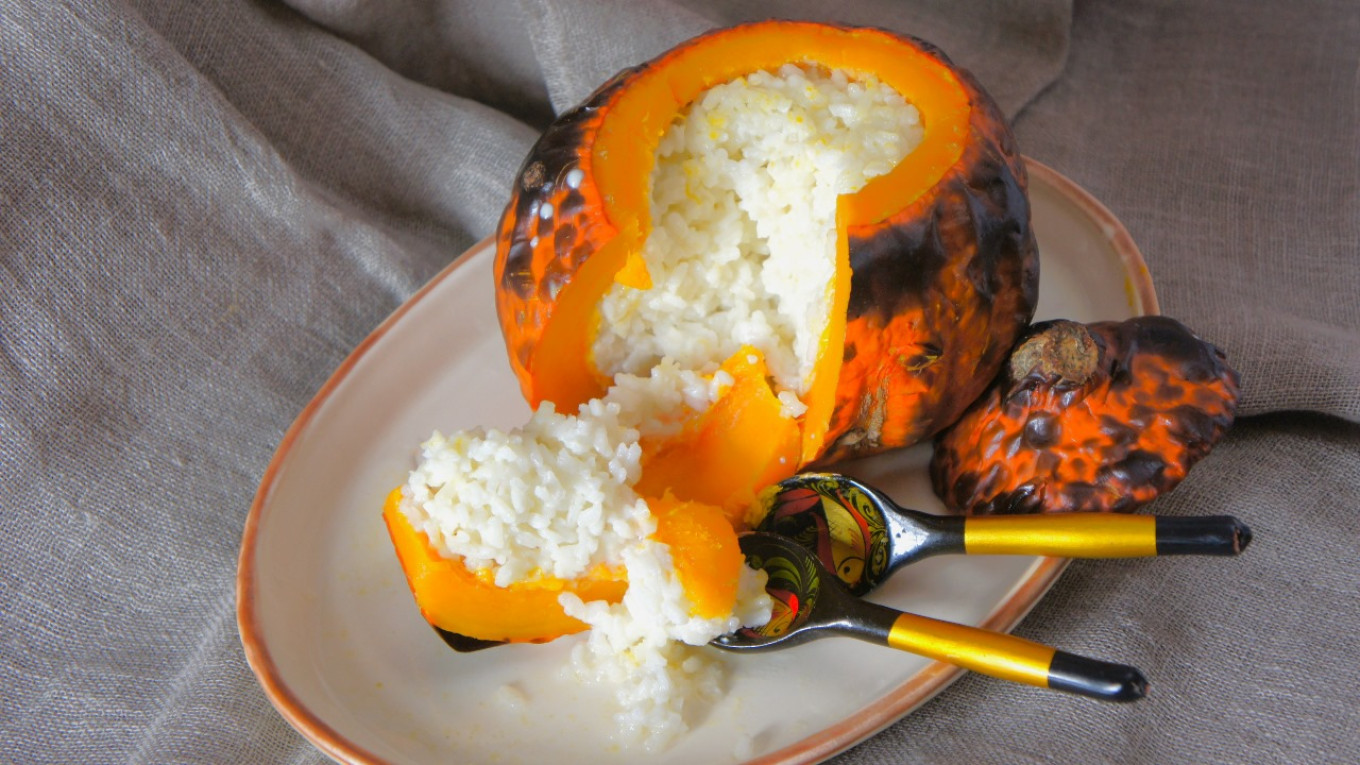
In the "Compendium of the Tsar's Dishes" (1610-1613) we read: "A dish of saffron chicken soup made with a chicken, 4 zolotniks (zolotnik = 4.2 grams) of saffron, a zolotnik of cinnamon, Sorochinsky millet ...". Or: "A dish of pies made with a scoop of flour, a spoon of Russian millet..."
So where did the word "sarasin" come from? It apparently came from Byzantium, but the process was complicated. To begin with, the term “Saracen/Sarasin" is generally found all through western Europe. It’s the word used in Europe to identify all Arabs after the Crusades. In April 1204 the Byzantine capital Constantinople was captured by European knights during the Fourth Crusade. For some time afterward — a bit more than 50 years — a Latin Empire was established in Constantinople. Maybe then the word "Sarasins" to denote Arabs and Turks became widespread at that time? Perhaps from there it came to Russia, where the capital city of Moscow was called the Third Rome after the fall of Constantinople to the Ottoman Empire in 1453?
But how did the word “sarasin” come to Europe? There it is the word for buckwheat. The first mention of buckwheat in France is only in the 16th century. Then it was called "black wheat from the Sarasins" and was sown in Brittany in the west of France. Up to this day Breton buckwheat pancakes are a local specialty and one of the country’s favorite national dishes.
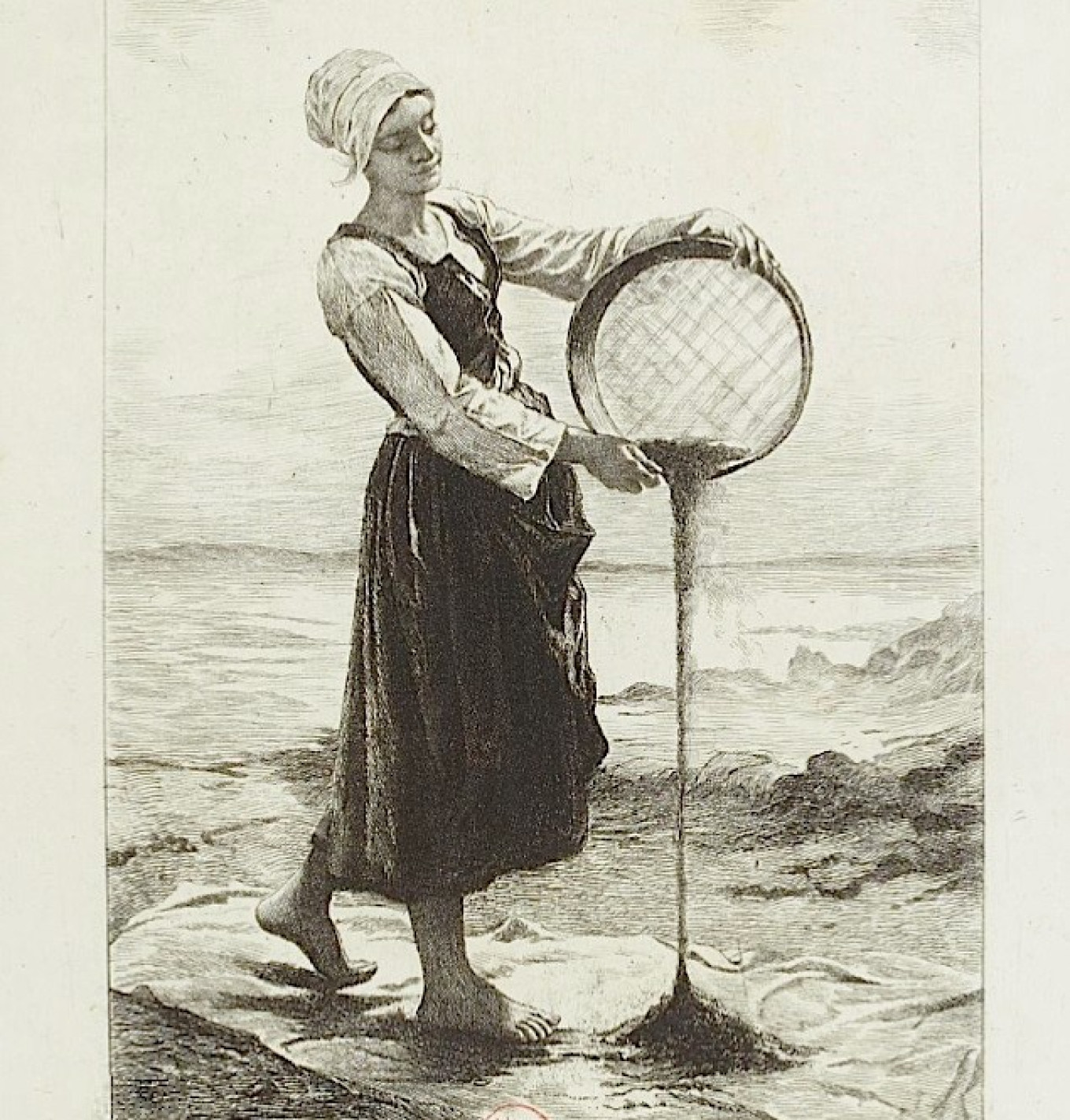
But why was it called “sarasin”? We know that buckwheat came from the East, but that happened much later that the Crusades in Palestine. By the 16th century the Crusades had been over for more than 300 years, and the memory of it had faded.
We have a theory. People have always attributed any unfamiliar, incomprehensible product to some distant peoples and lands. This has happened often in history. For example, "kale" was called "Siberian" in England, and in America there is “red Russian kale.” The most vivid illustration of this process is the story of an ordinary turkey — the bird brought to Europe by explorers like Columbus, the Spanish conquistadors, from the New World in the 16th century. In Russian cookbooks of the late 18th century you can find dishes made of "turkey" or "Indian chicken." Here, however, at that time “Indian” didn’t mean “from the Native American Indians,” but rather “from India.” In English, the bird was called a turkey. Why would that be?

The explanation is simple: an unfamiliar product was attributed by the public to countries that might be known but were still thought of as "terra incognita" — places with completely unknown customs and habits. For the mass English audience in the 16th century, Turkey was a country, "at the end of the world." It was, however, known and spoken about, unlike America (where the turkey originated), which fewer people knew at the time.
The "Turkish" bird for the English and the "Indian" bird for the Russians were one and the same bird, a bird that came from “who knows where" at the edge of the world — or maybe even further away. It was a bird they didn’t know, and had no idea how to cook — a completely unfamiliar food, which, nevertheless, was considered rather fashionable and progressive to serve at the table.
Isn't this what happened with the term "sarasin" in France in relation to buckwheat, and with the term "Saracen millet" in Russia in relation to rice? Both of these products are unfamiliar and alien to the French and Russian public. Their description as coming from distant lands and peoples is obviously invented and due to their lack of knowledge of geography. But that is quite forgivable in people who lived hundreds of years ago.
Today, however, we can happily bring these two long-standing misunderstood foods together at the table — and, at the same time, have something to cook with all the squash we are getting from friends. The squash harvest this year is record-breaking, and dacha gardeners are begging city friends to take squash. These patties of turkey, rice and squash are called “lazy” in Russian because they aren’t wrapped in cabbage leaves.
Saracen Turkey and Rice Patties
Ingredients
- 900 g (2 lb) turkey leg
- 1 medium onion
- 1/3 cup rice (round-grain)
- 300-400 g peeled and seeded (summer or Tatuma) squash or zucchini
- salt, freshly ground black pepper
- 50 g (3 ½) Tbsp butter
for the sauce
- 100 g (1/2 c) sour cream
- 50 g (3 ½ Tbsp) tomato paste
- 1/2 cup chicken broth or water
- salt to taste, pinch of sugar
- bay leaf, spices to taste
Instructions
- Dice onions and sauté in butter until transparent and lightly browned. Remove from the pan, cool.
- Grate squash and put in a skillet. Sauté until soft and transparent. Transfer to a sieve, press with a spoon and allow to drain. Cool.
- Rinse rice, pour into boiling salted water and cook over high heat for 3 minutes. Drain the water and cool the rice.
- Cut turkey meat off the bones into cubes about 2 cm (1 inch) per side. Put through a meat grinder together with the sauteed onion.
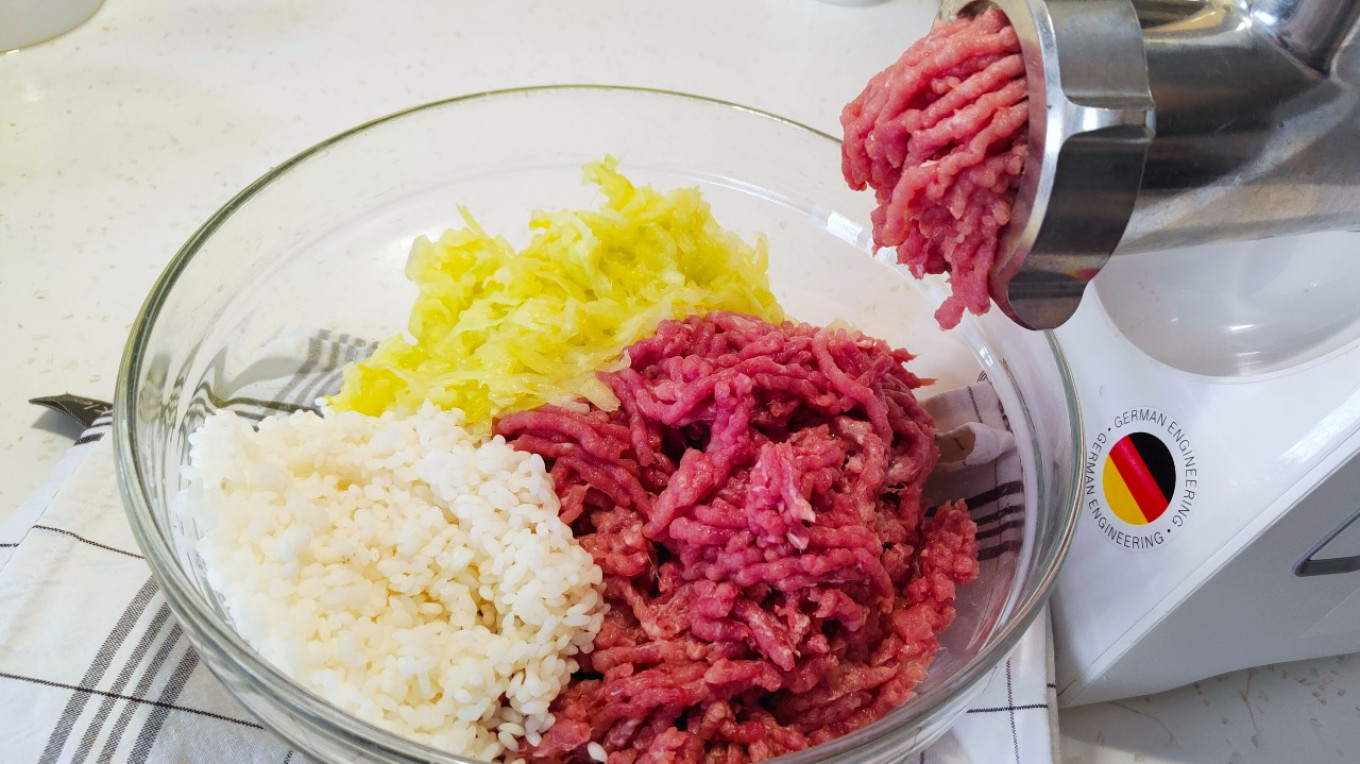
- Add the minced turkey to the rice, squash, salt, pepper; mix well.
- Form oval patties and place them in a Dutch oven or heavy-bottomed pot with a lid.
- Mix the sour cream with tomato paste, pour in broth or water. Stir, salt, add a pinch of sugar, pepper and your favorite spices and herbs.
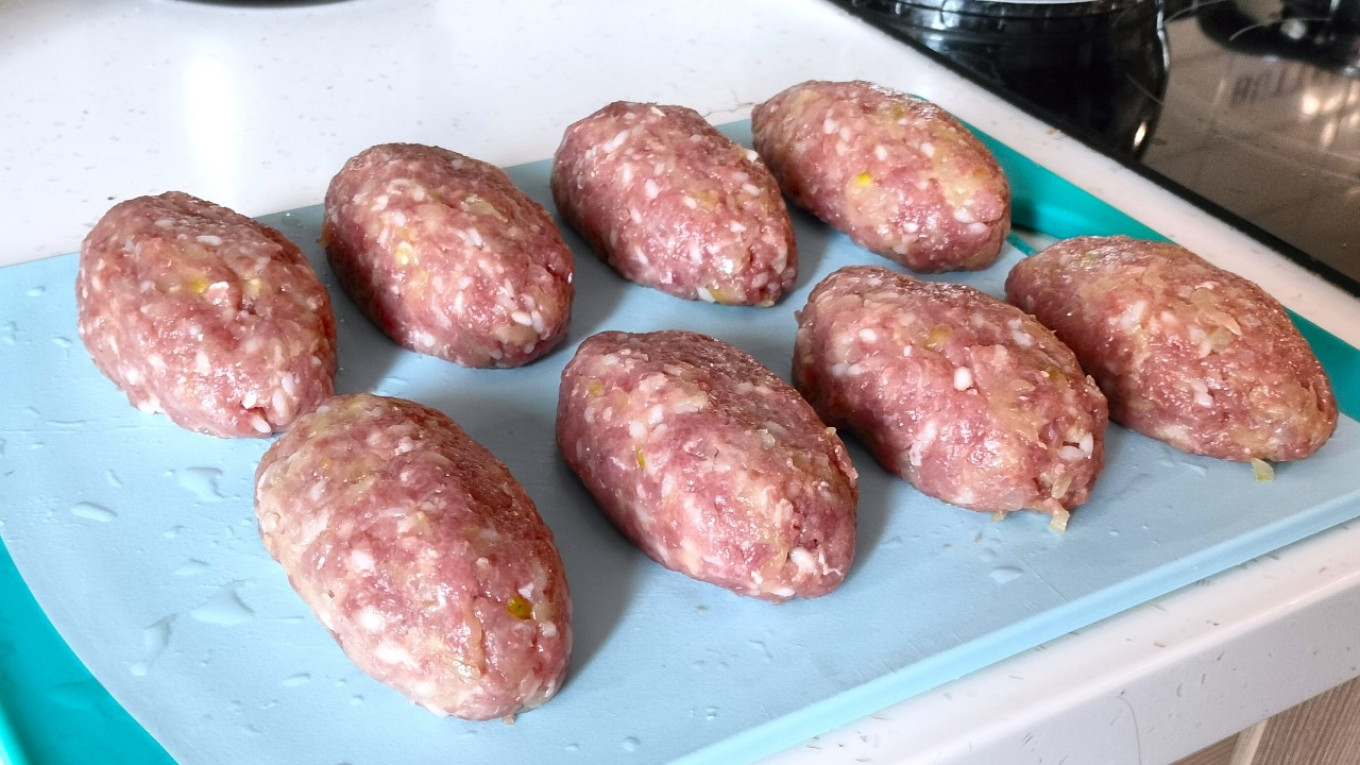
- Pour the sauce over the patties and put the pot on the just above medium heat. When it comes to a boil, turn down the heat so that the patties simmer, not boil.
- Cook for 45-50 minutes. If desired, serve the patties with the sauce in which they were stewed or with sour cream.
A Message from The Moscow Times:
Dear readers,
We are facing unprecedented challenges. Russia's Prosecutor General's Office has designated The Moscow Times as an "undesirable" organization, criminalizing our work and putting our staff at risk of prosecution. This follows our earlier unjust labeling as a "foreign agent."
These actions are direct attempts to silence independent journalism in Russia. The authorities claim our work "discredits the decisions of the Russian leadership." We see things differently: we strive to provide accurate, unbiased reporting on Russia.
We, the journalists of The Moscow Times, refuse to be silenced. But to continue our work, we need your help.
Your support, no matter how small, makes a world of difference. If you can, please support us monthly starting from just $2. It's quick to set up, and every contribution makes a significant impact.
By supporting The Moscow Times, you're defending open, independent journalism in the face of repression. Thank you for standing with us.
Remind me later.



